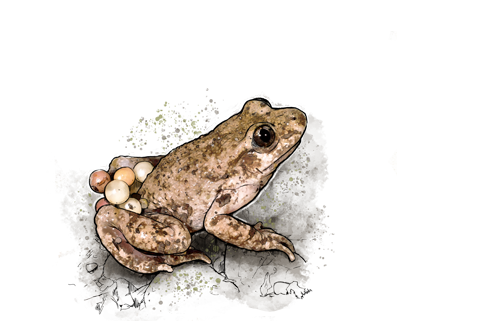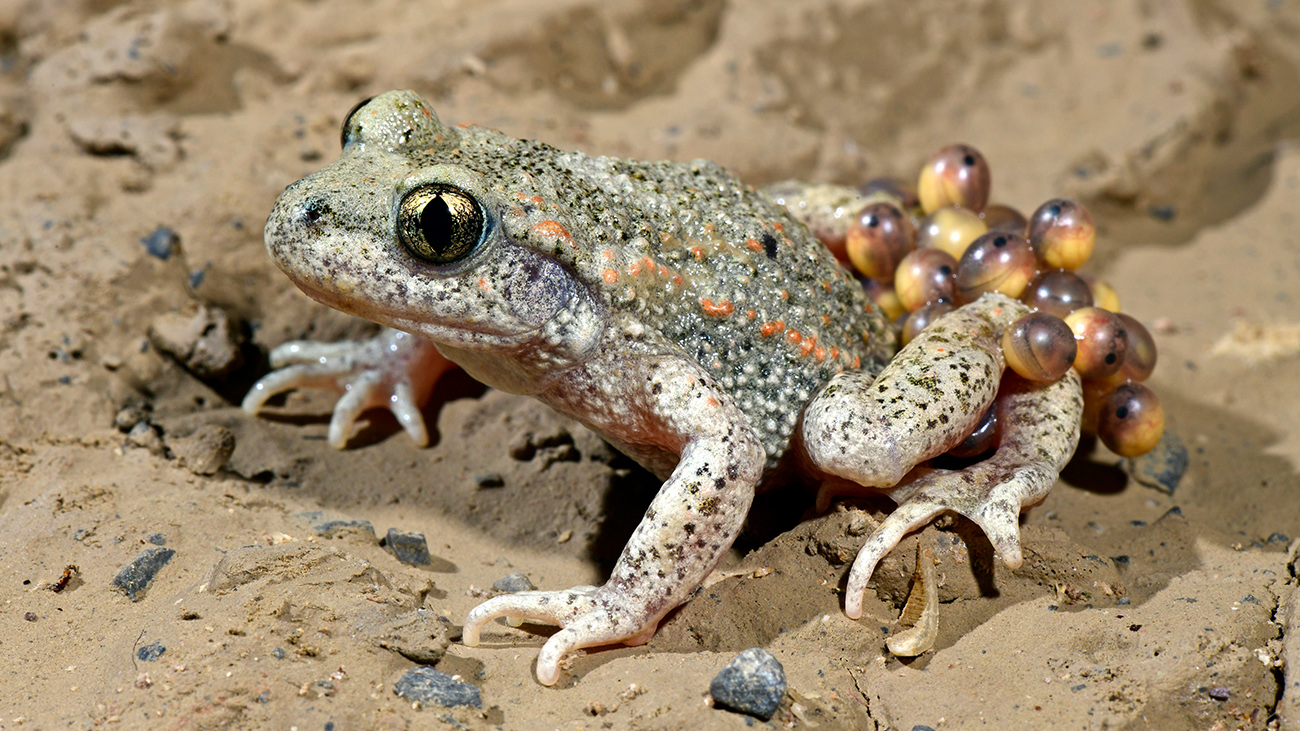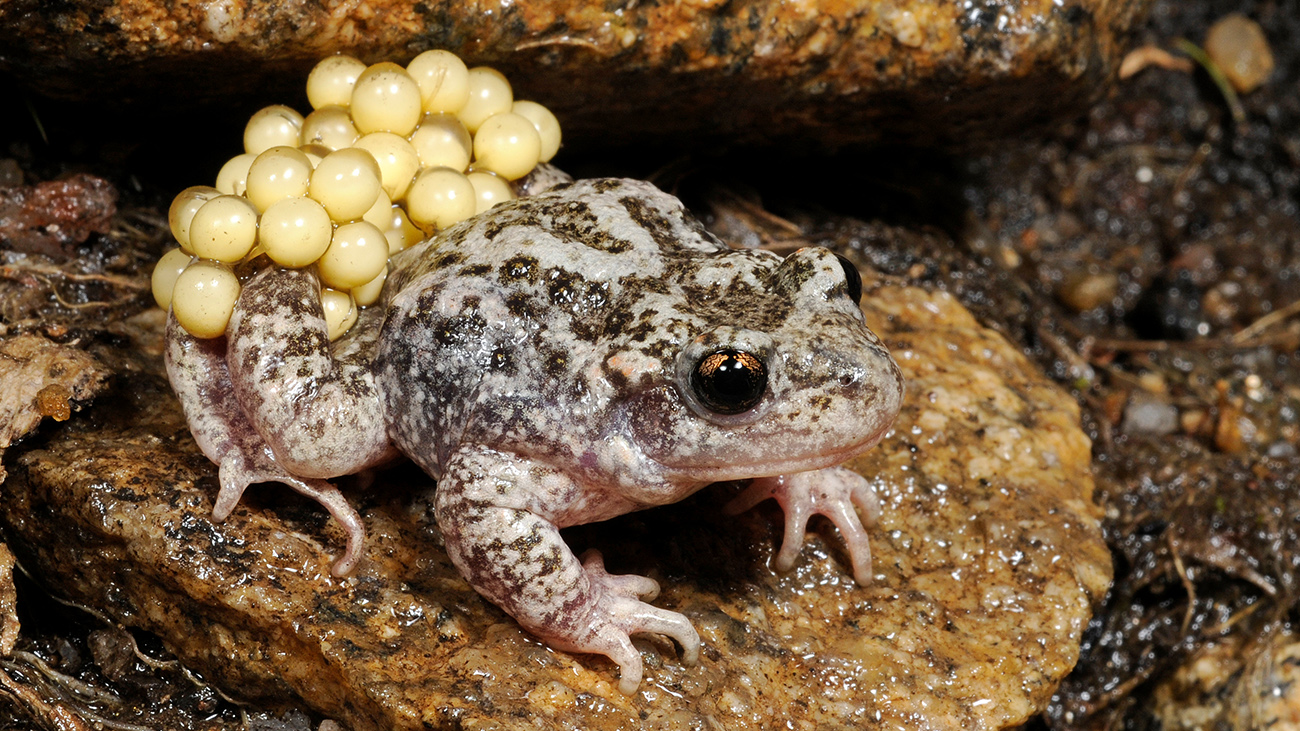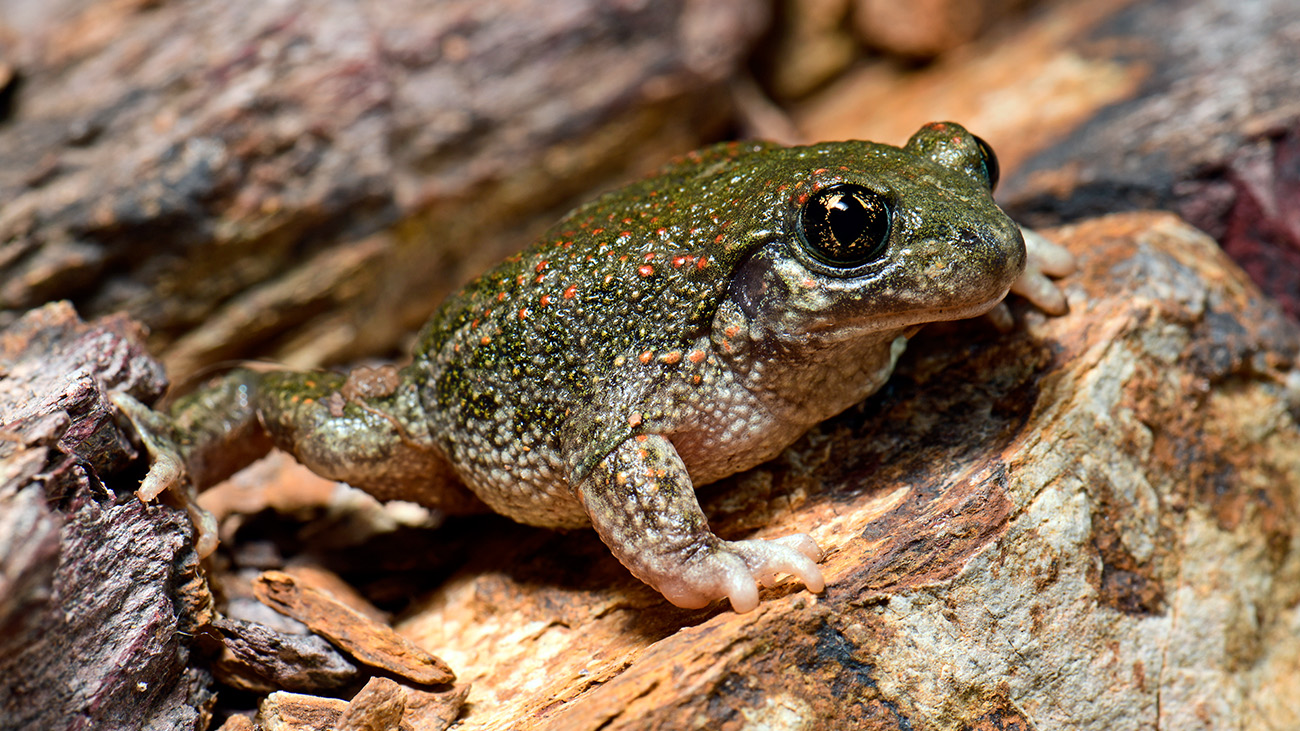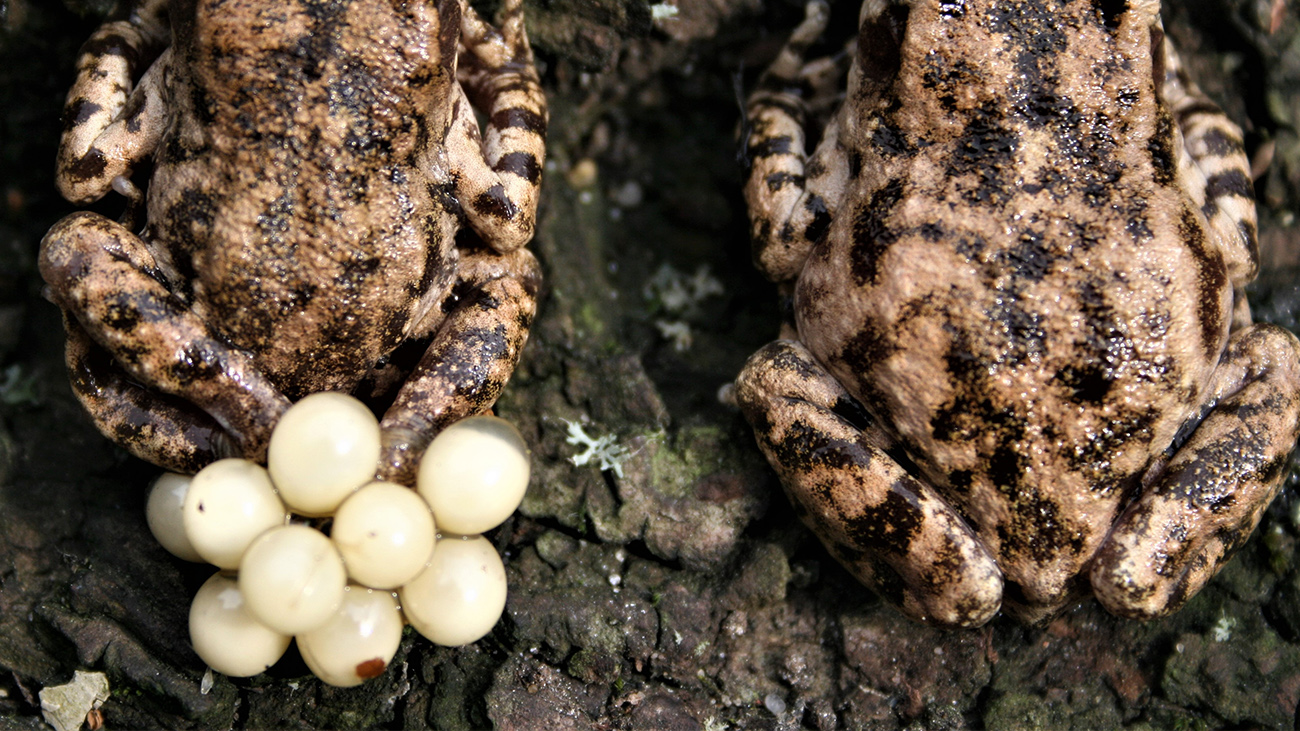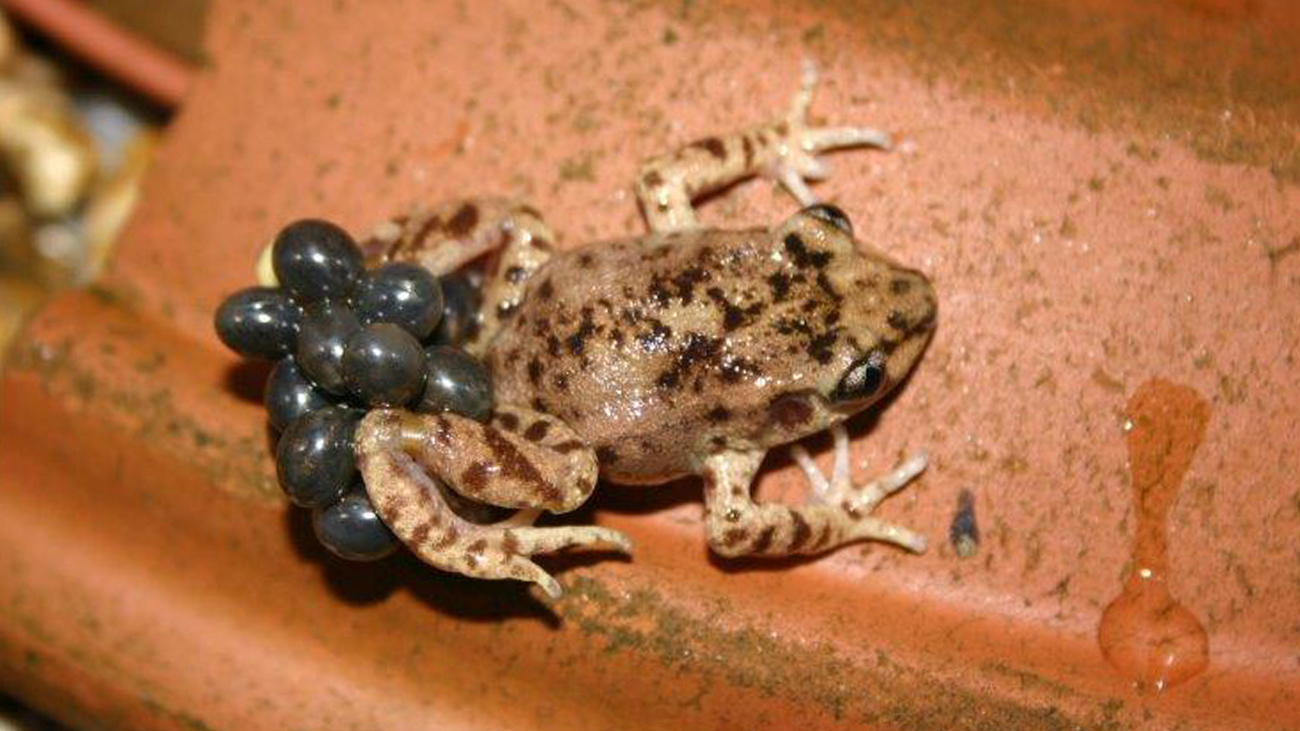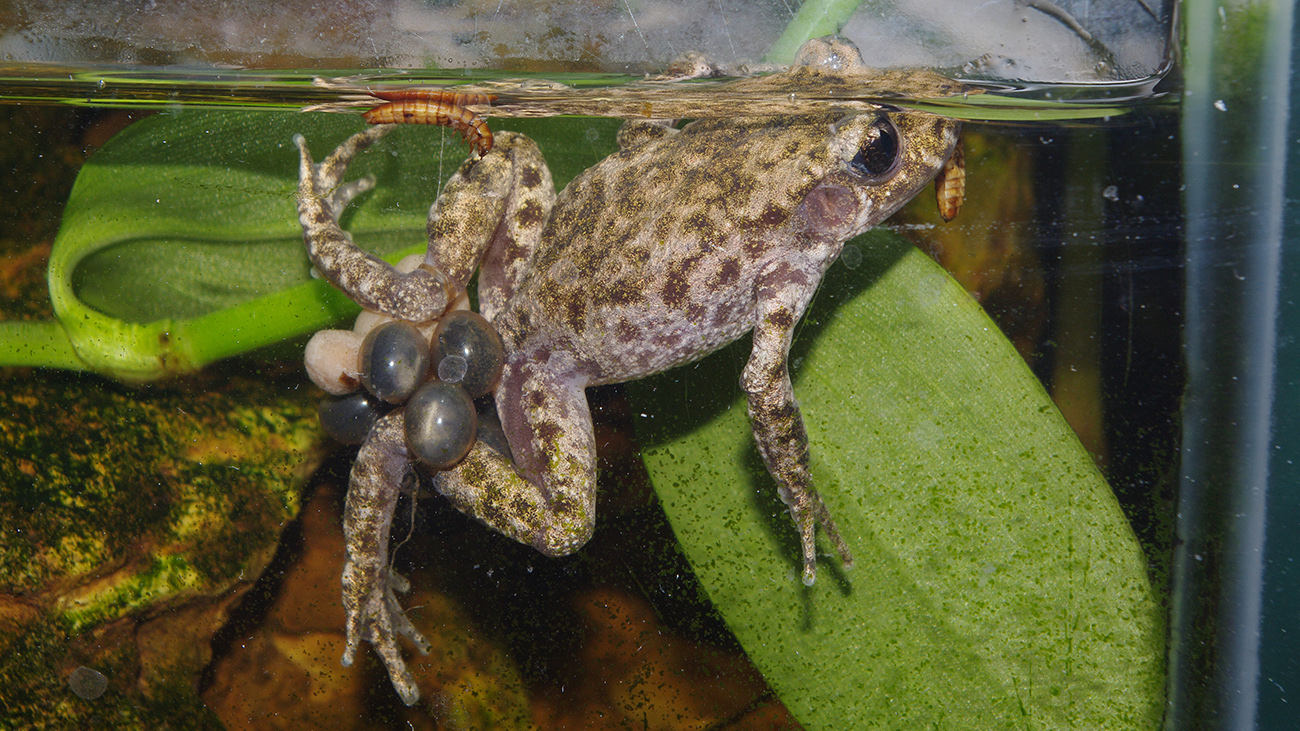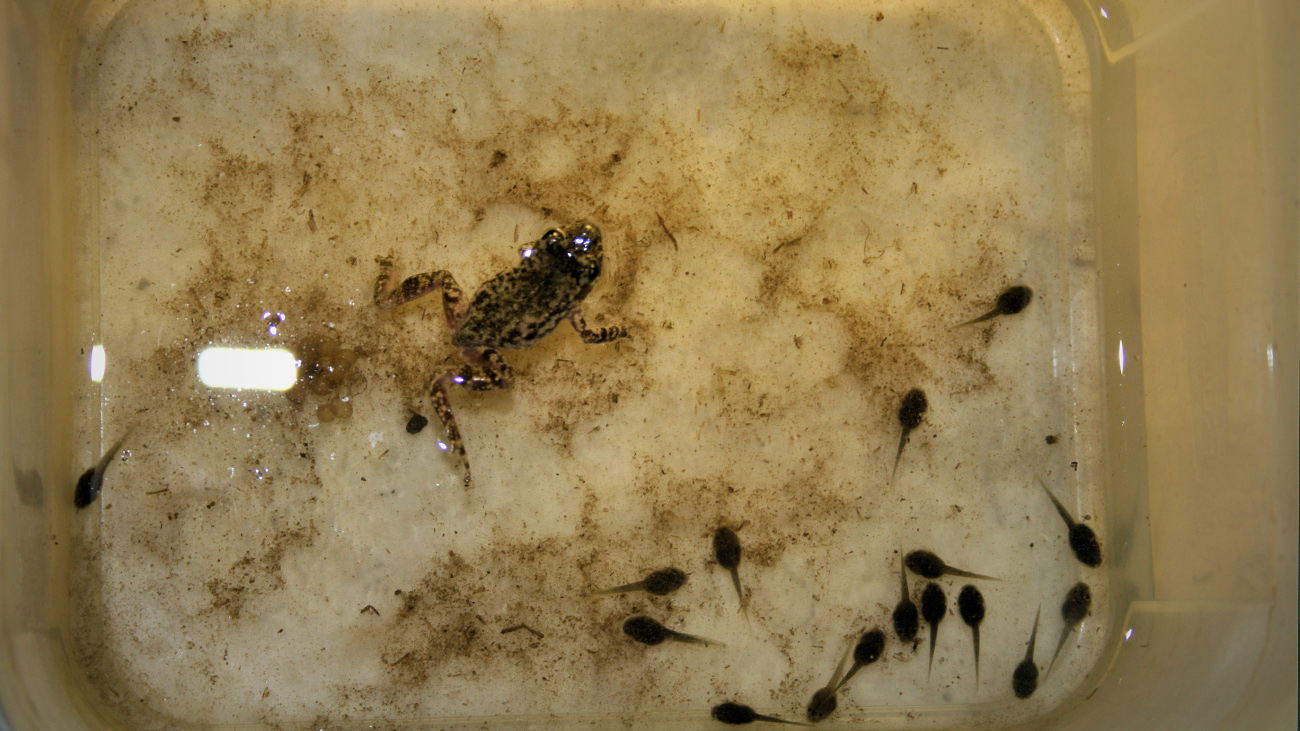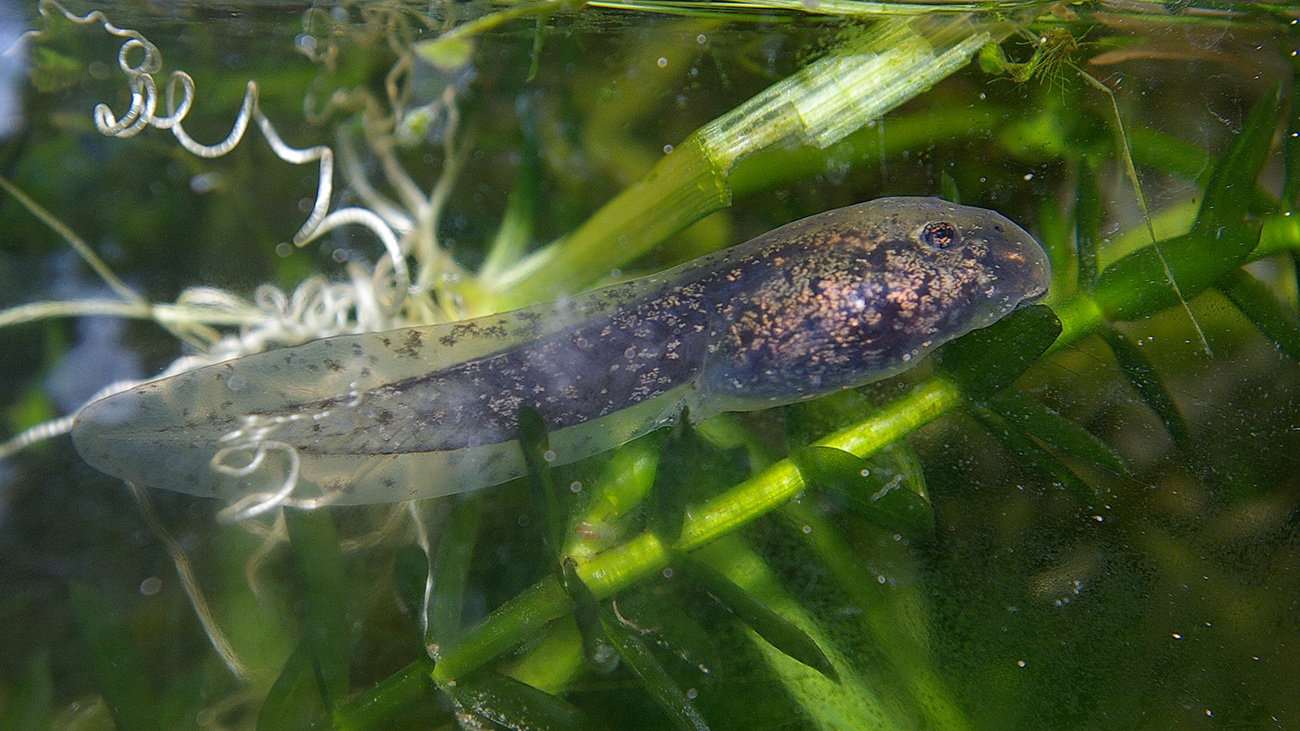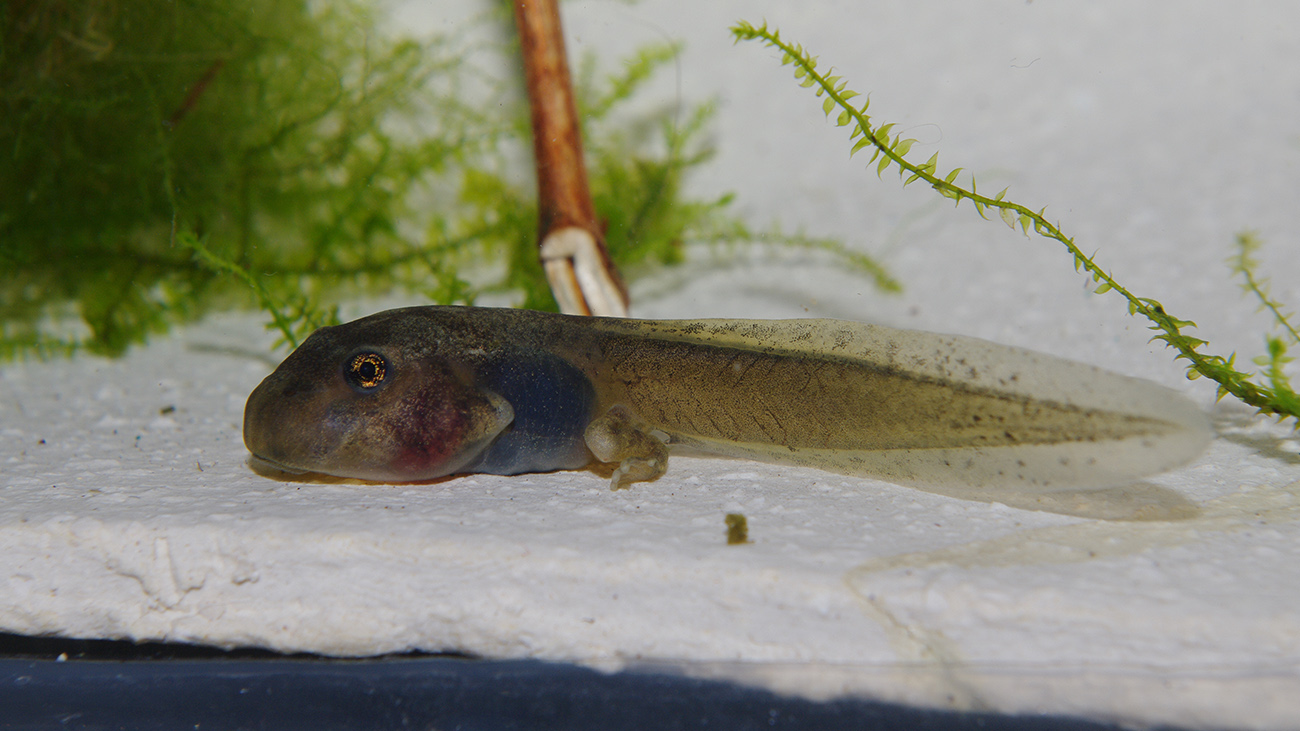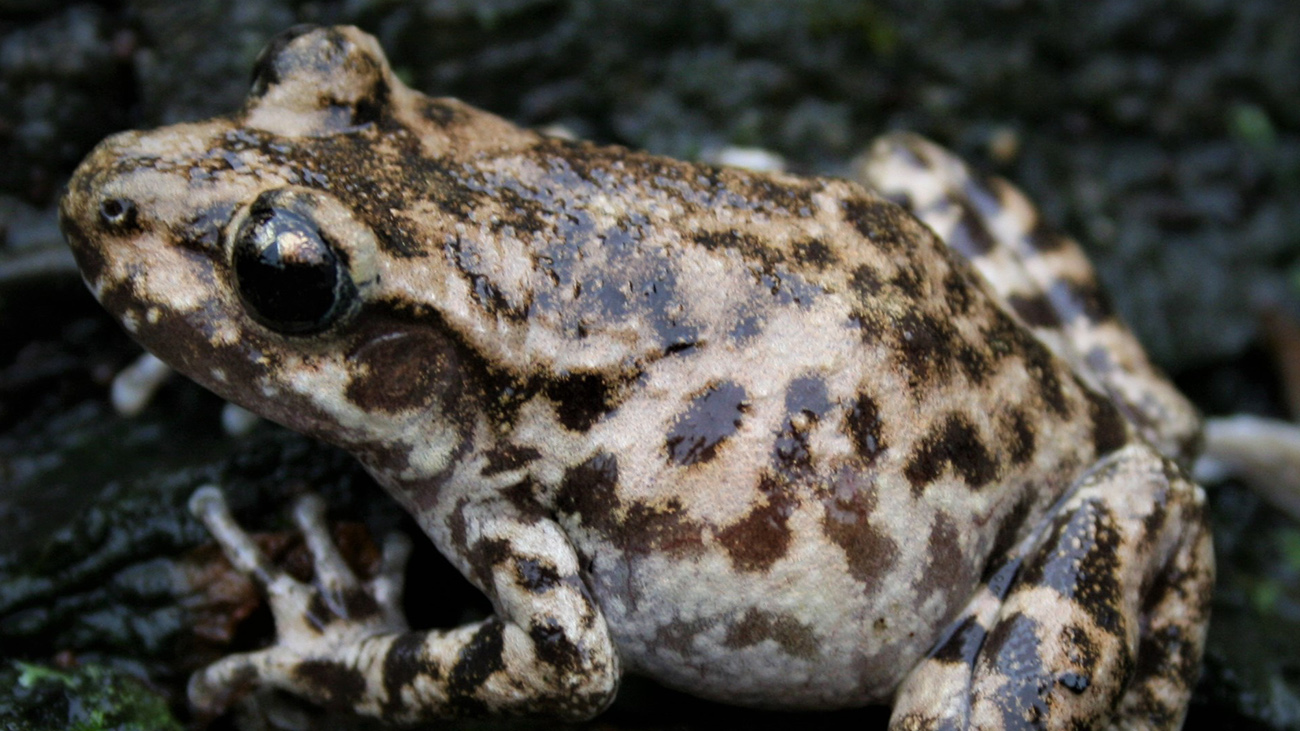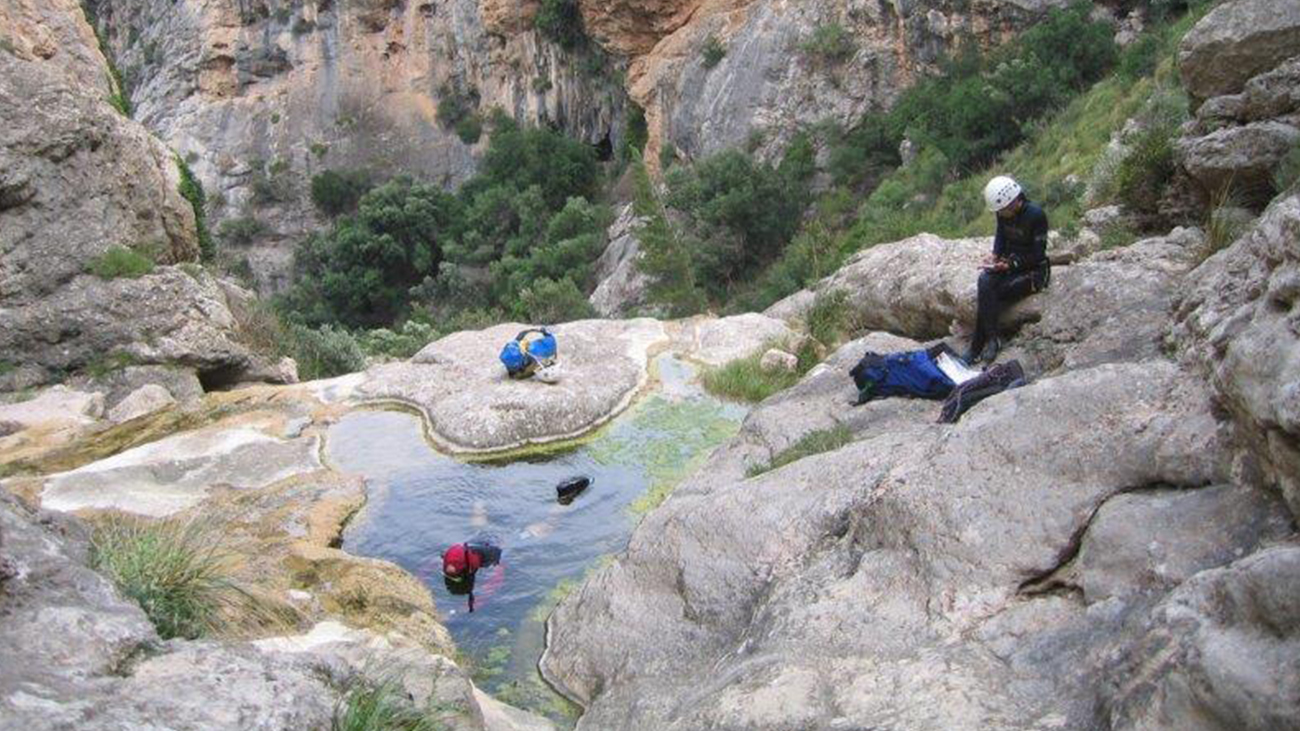Mallorcan Midwife Toad
Alytes muletensis
Mallorcan Midwife Toad
Alytes muletensis
CC goal
53 breeders
Status 11/2025
CC goal
425 animals
Status 11/2025
CC goal
53 breeders
Status 11/2025
CC goal
425 animals
Status 11/2025
In the beginning, there were a few bones. At the end of 1974, two scientists at the Archaeological Museum of Deyá on the Mallorca stumbled upon some 14,000-year-old amphibian remains that had been found in a karst crevice in the Muleta Cave on the Balearic island. It quickly became clear that they were dealing with an unknown Pleistocene species. In 1979 they described it as “Balearic Toad” (Baleaphryne) and gave it the species name muletensis after the cave where it was found. It was assumed that it had become extinct after the appearance of man on Mallorca in ancient times.
Primal Relatives
The mammoth among toads
The reports of the Pleistocene find reminded biologist Joan Mayol that he had found a common midwife toad on Mallorca in 1978. He fished the little animal from his collection jar and was astonished to discover that on closer inspection it was anything but ordinary: he had discovered a living fossil! On Mallorca, he succeeded in finding living tadpoles and freshly metamorphosed young toads in the remote gorges of the Serra de Tramuntana. A scientific sensation! For the frog researcher, this was comparable to an encounter with a mammoth in the flesh.
Hidden in deep canyons
However, even after an extensive search, only a handful of sites were found. Apparently, the toads had only narrowly escaped extinction. Once they were widespread on Mallorca. Presumably they were simply eaten up by the viper snake and the Iberian water frog, which had already come to the island with man in ancient times. In the ravines of the Serra de Tramuntana, however, it was too cold for the invaders, so that the toads found a last refuge here.
Heavily emancipated: Males as midwives and childcarers
The invisible enemy
It was uncertain how long the small remaining population would survive in the future. Therefore, in 1985, some animals were brought to the zoo on the Channel Island of Jersey by the conservationists of the Durrell Wildlife Conservation Trust. It was possible to breed and distribute the small toads, so that a release into the wild on Mallorca could begin as early as 1989. Thousands of tadpoles and young toads were released under scientific management, but only in ravines where the species had disappeared. This precautionary measure proved to be absolutely right. In the meantime, a previously unknown enemy had spread in Europe: the chytrid fungus Bd. It can cause mass mortality among frogs. By the time it was scientifically described in 1999, it was already too late: the fungus had come to Mallorca with the abandoned toads.
A quarter of the Mallorcan midwife toads living in the wild are offspring of the zoo's progeny.
© Serge Bogaerts
Things remain dicey
Nevertheless, the reintroduction program was a success: of 25 sites where the toads are found today, almost half can be traced back to it. A quarter of the Majorcan midwife toads living in the wild today are descendants of the zoo’s offspring. But the fungus remains just as much a threat as the old enemies water frog and viper snake. And they now have a powerful ally: climate change. Rising temperatures could help the plague break out or allow the invaders to push even further into the cool canyons. In addition, there are problems with agriculture and pollution. So, there is still a long way to go before the all-clear is given. It even is quite conceivable that the habitats will become uninhabitable for the toads in the medium term. This does not have to mean their final end in nature, because one day the invaders and the fungus may be eradicated and the biotopes renaturalized. However, this would only benefit these living fossils if they survive until then in human care, in zoos and with private keepers.
Conservationists from Durrell Wildlife Conservation Trust/Jersey Zoo at work in theSerra de Tramuntana auf Mallorca © Dawn Fleming/Durrell Wildlife Conservation Trust
For breeders
Basic information on biology and breeding
The Majorcan midwife toads is very suitable for keeping in a terrarium and can also be recommended to beginners and school vivariums without hesitation. Terrariums of 80 x 30 x 40 cm are suitable for keeping a group of up to 12 animals. Gravel substrate, hiding places made of stone slabs, shards of clay or pieces of cork bark. Dry and moist hiding places are important. A large water bowl with a safe exit is used for bathing and spawning. They should be kept at room temperature. Feed with all common food animals up to the size of medium-sized crickets. The tadpoles can be raised in large groups in normal aquaria without any problems.
